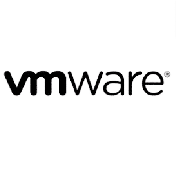Inhalt des Trainings
This course provides an overview of the HPE NonStop Cluster I/O Modules (CLIMs). Acquire the skills to understand the HPE NonStop most modern I/O infrastructure using CLIMs and which features the CLIMs are providing to HPE NonStop customers. Acquire the commands to configure and monitor CLIMs using the Cluster I/O Protocol (CIP) SubSystem. After completing this course, you will be able to configure the CIP SubSystem, CLIMs, storage devices using Storage CLIMs, configure basic networking using IP CLIMs and perform basic operations. This course is 80% lecture and 20% hands-on labs.
After you successfully complete this course, expect to be able to:
- Introduce you to the NonStop server architecture including Cluster I/O
- modules and their function and location
- Introduction of the software architecture for CLIMs (CIP Subsystem)
- Provide an overview of the IP Cluster I/O Module (CLIM)
- Provide an overview of the Storage CLIM
- Adding CLIMs to a NonStop system
- Provide an overview of the generic CLIM commands
- Provide an overview of the specific Storage CLIM commands
- Provide an overview of the specific IP CLIM Commands
- Provide an overview of how to diagnose an IP CLIM environment
Vorkenntnisse
Concepts and Facilities for NonStop Servers (U4147S)
Microsoft
Microsoft Office
ITIL
Red Hat
Cisco
 VMware
VMwareCitrix
Unix Linux
Amazon AWS
 Oracle
OracleAutoCAD
IBM
Hewlett Packard Enterprise (HPE)
Google
Salesforce
AI – Artificial Intelligence
Automatisierung
Cloud Computing
Grafik
IT-Management
Development
Security
Netzwerk
Data Science
Soft Skills
Video Based Trainings
Nachhaltigkeit
